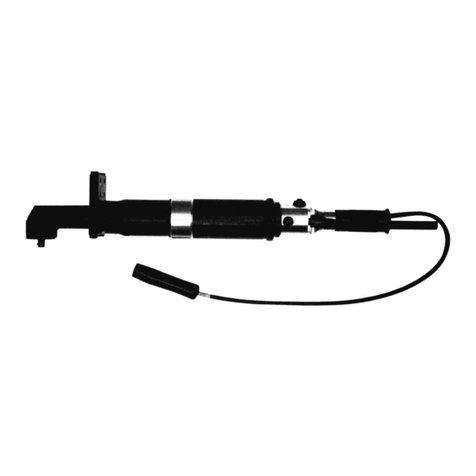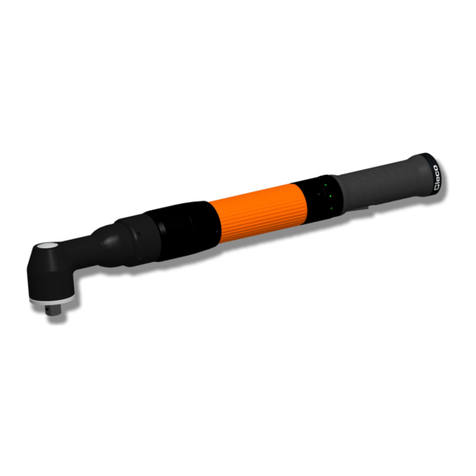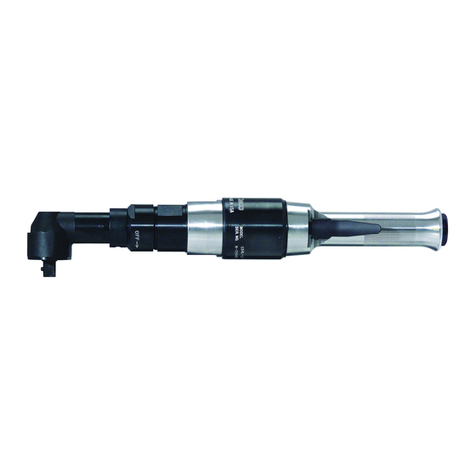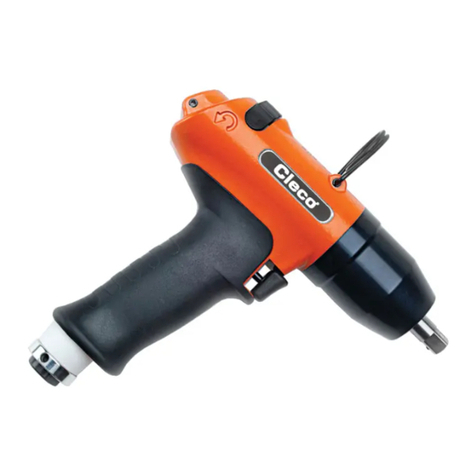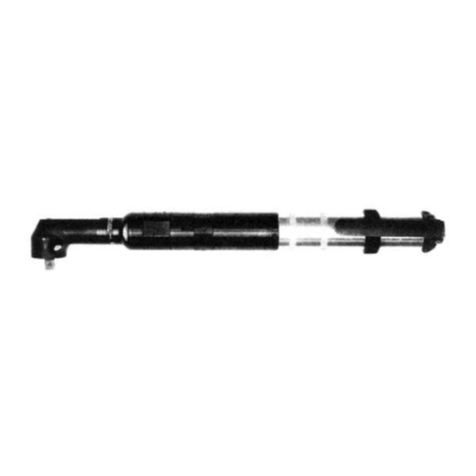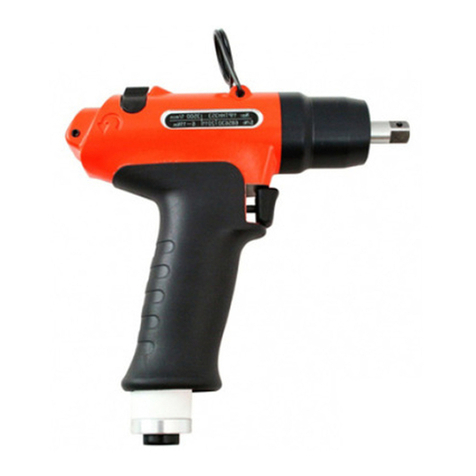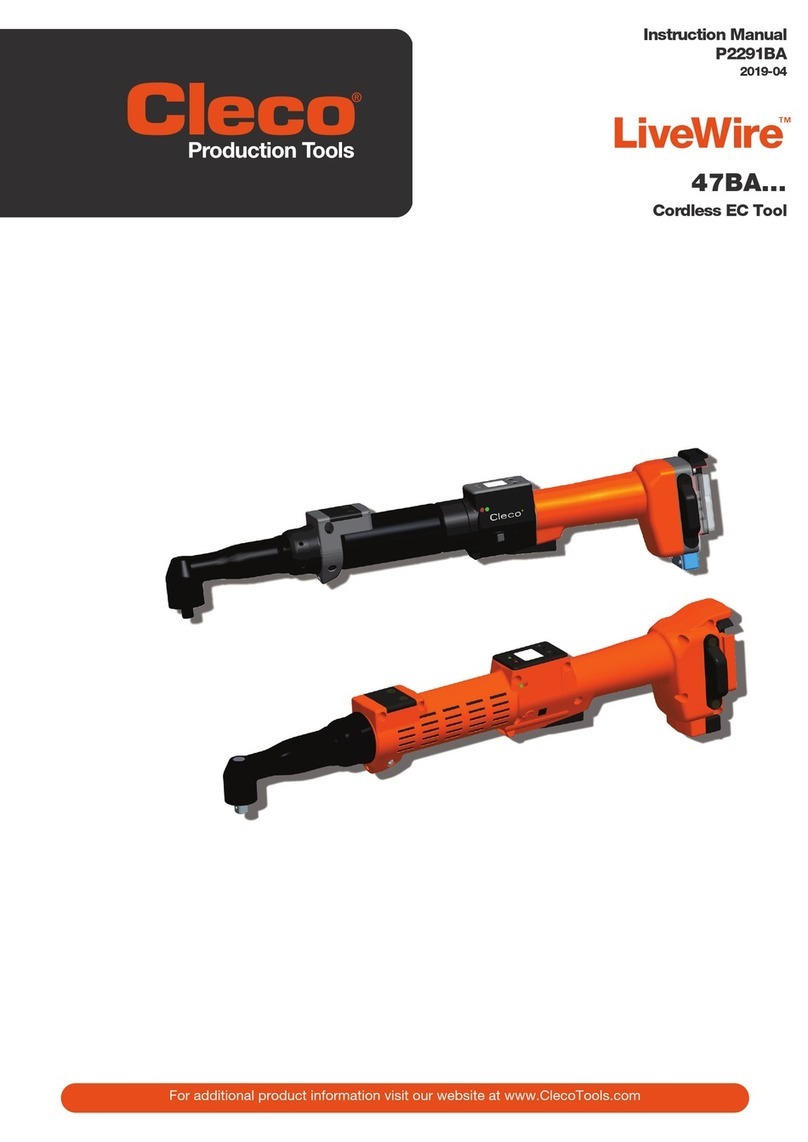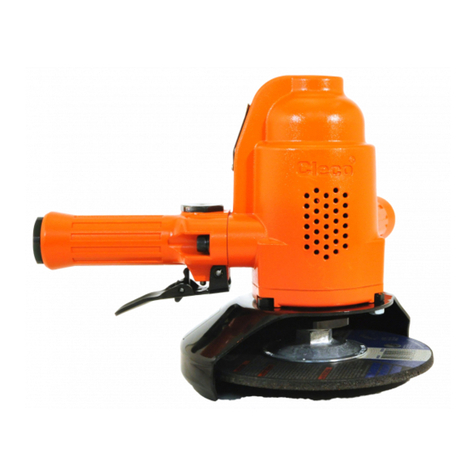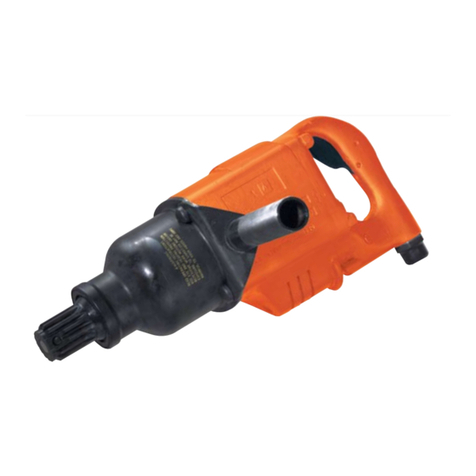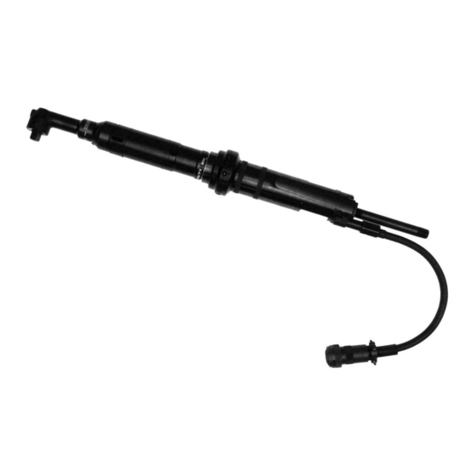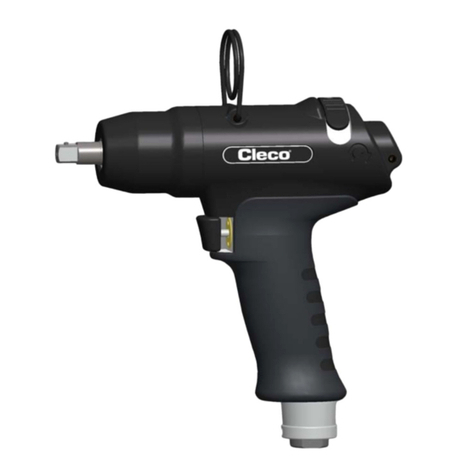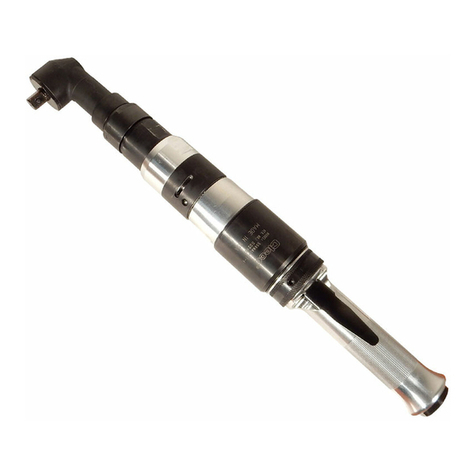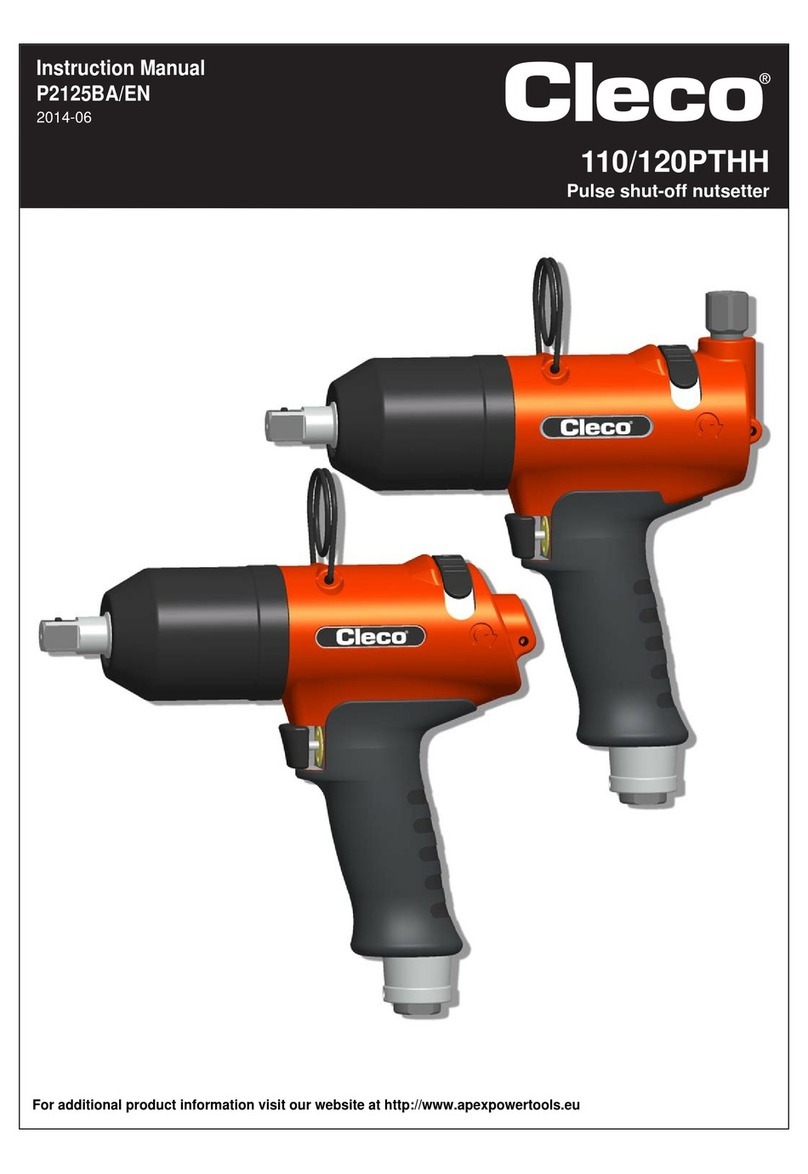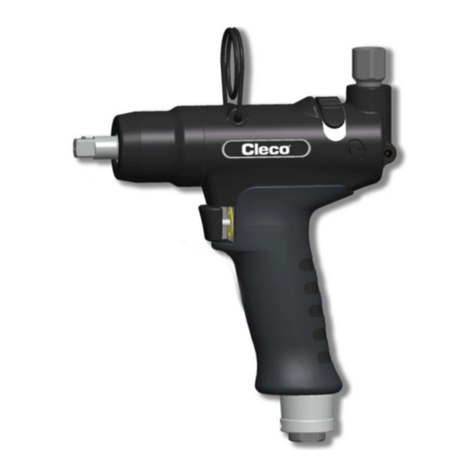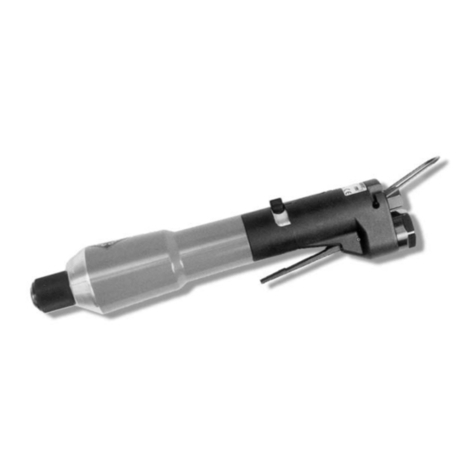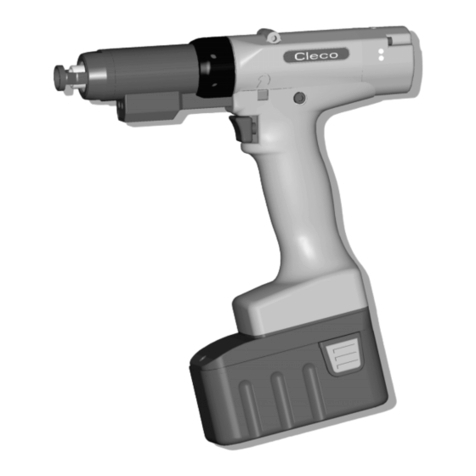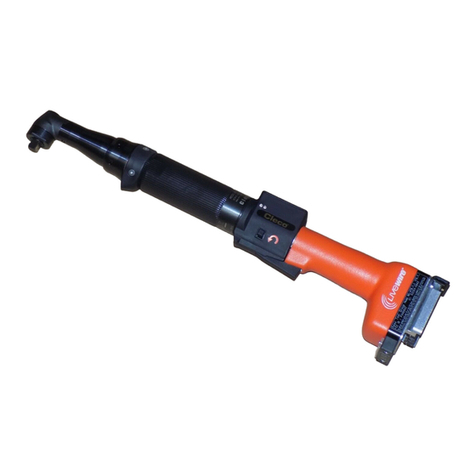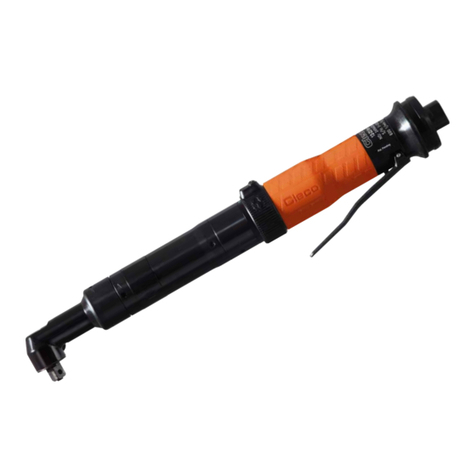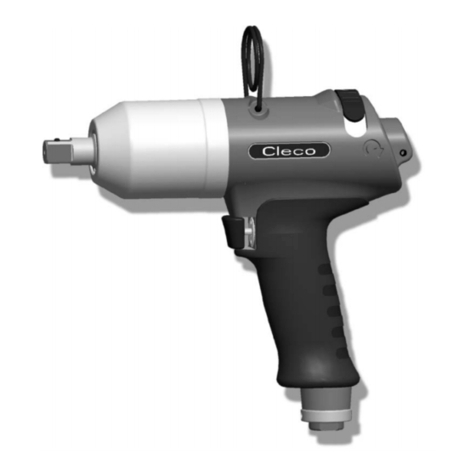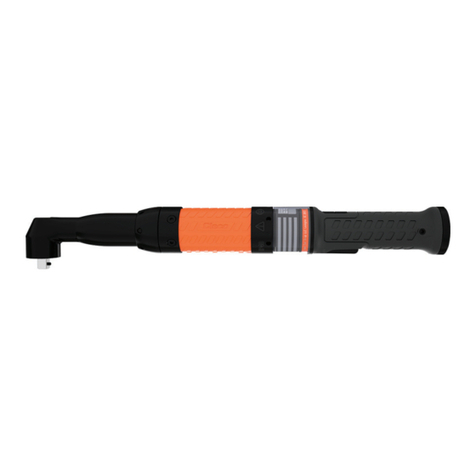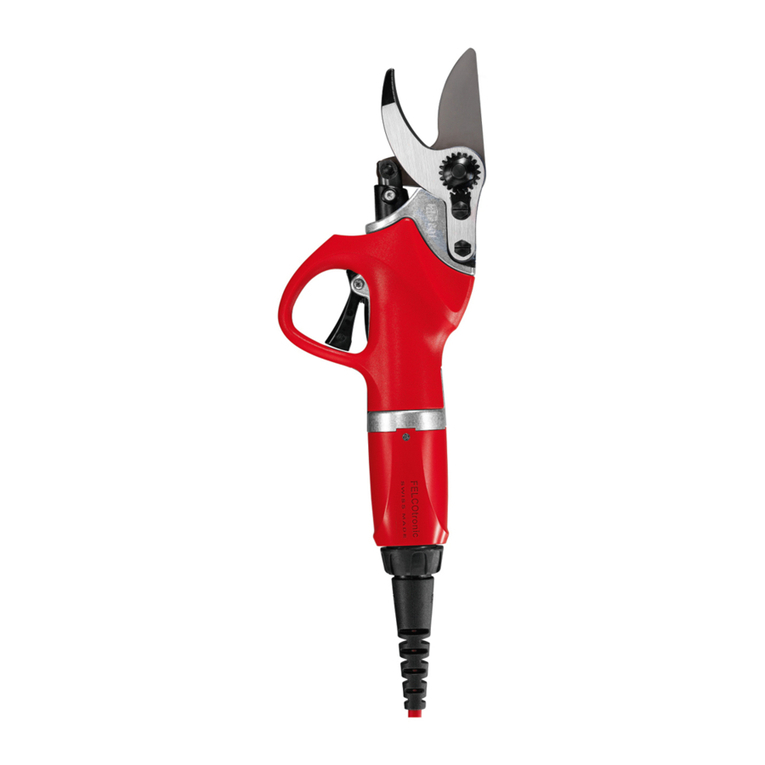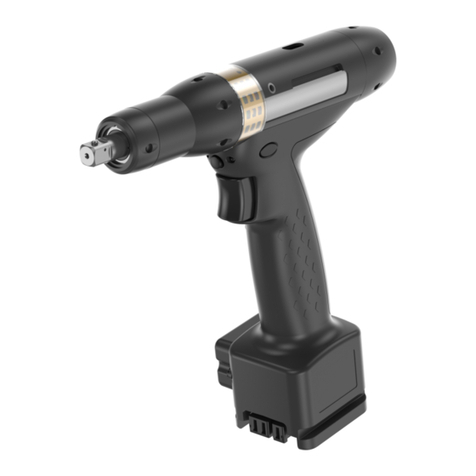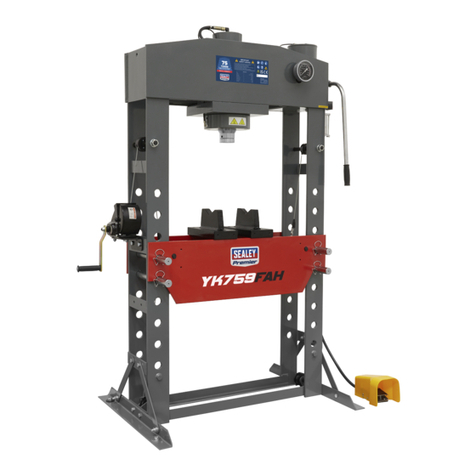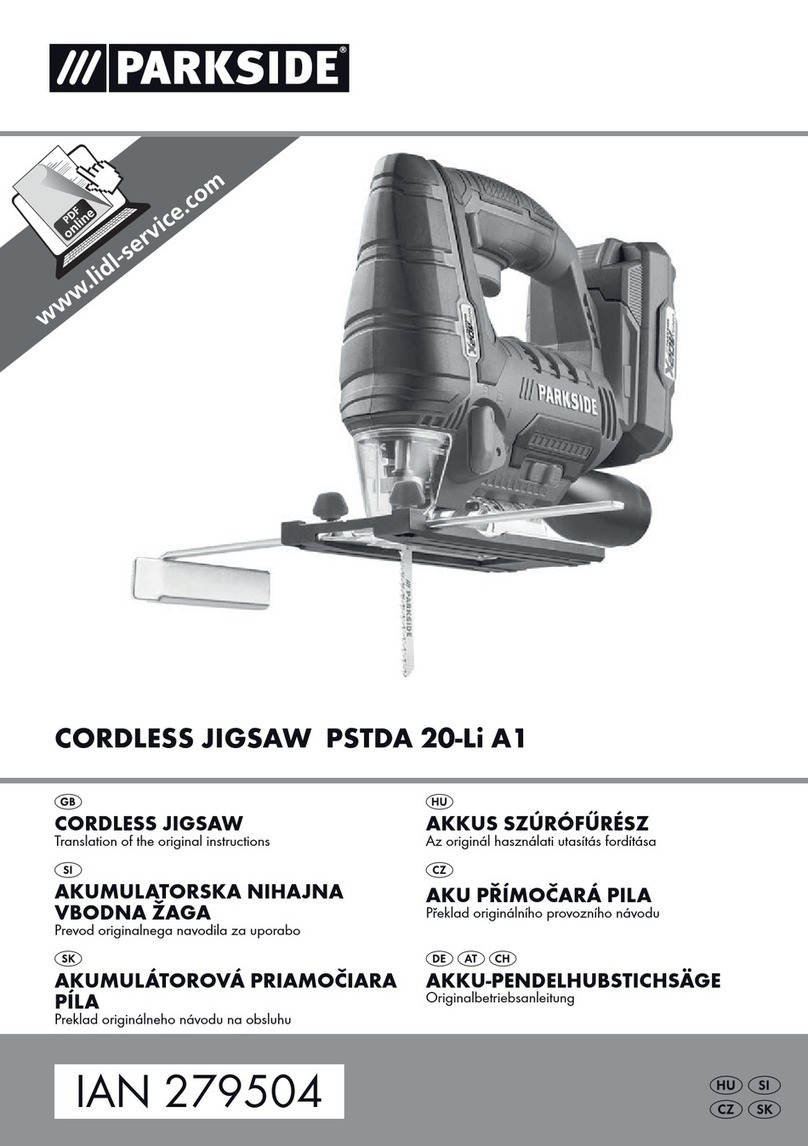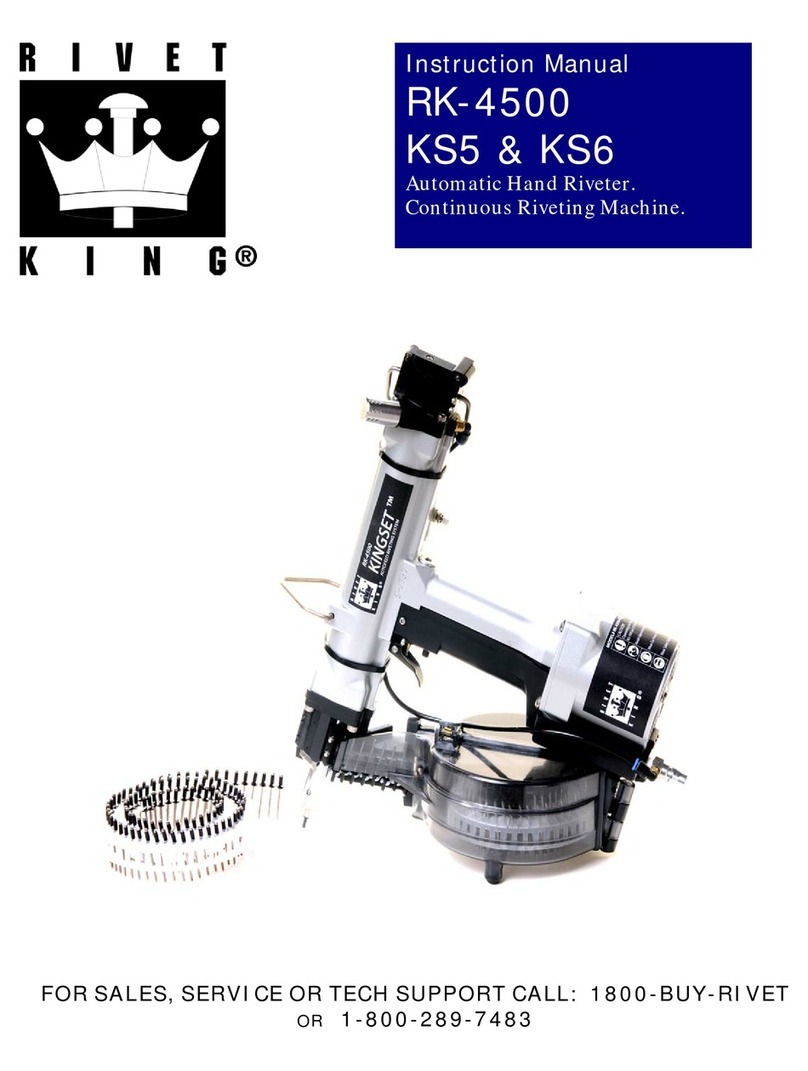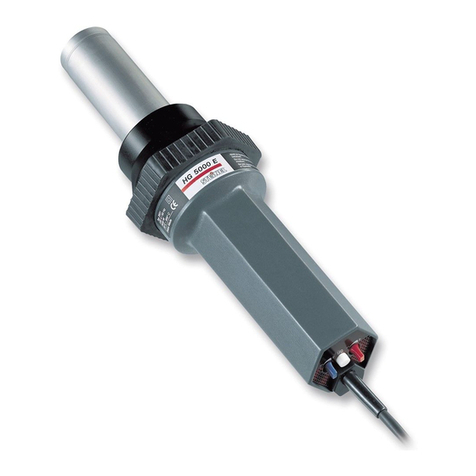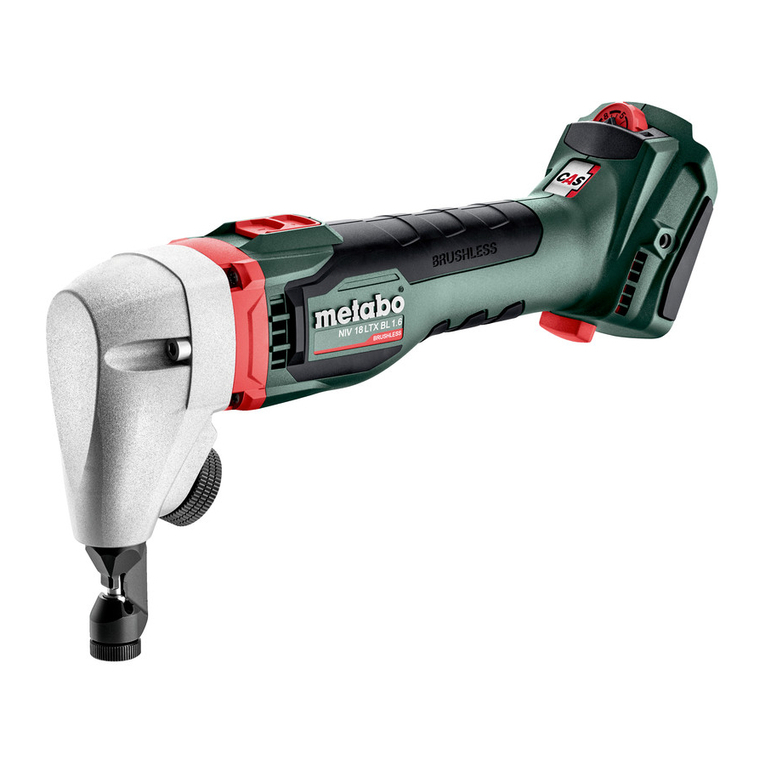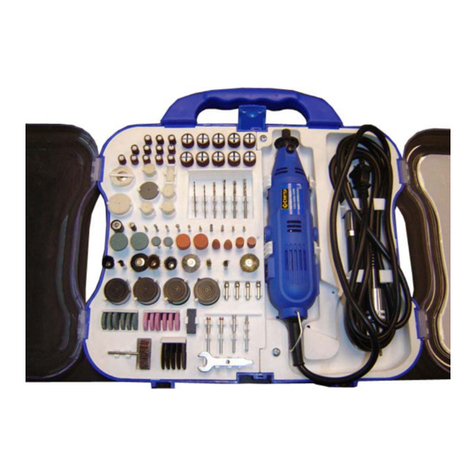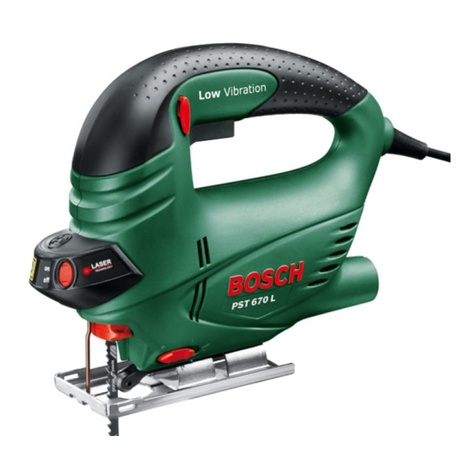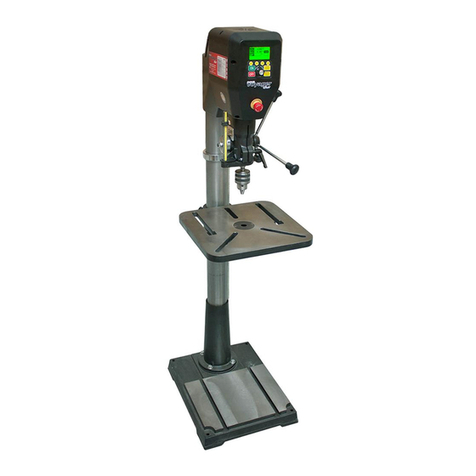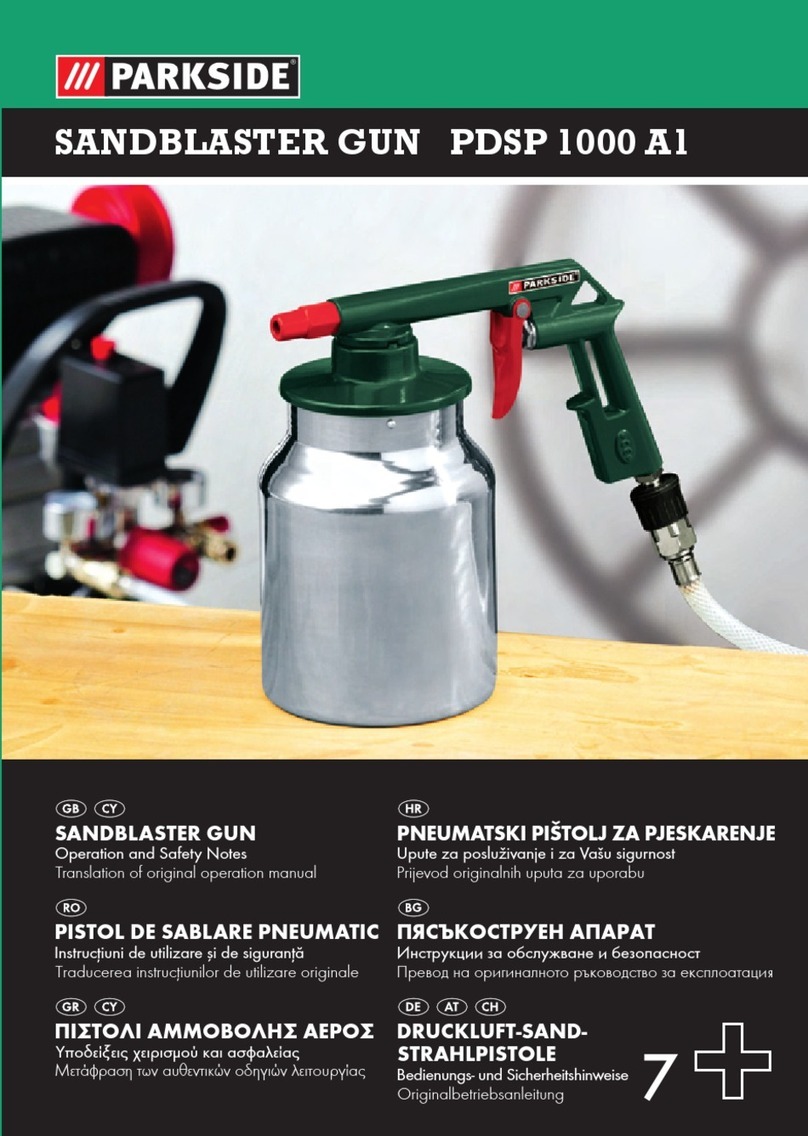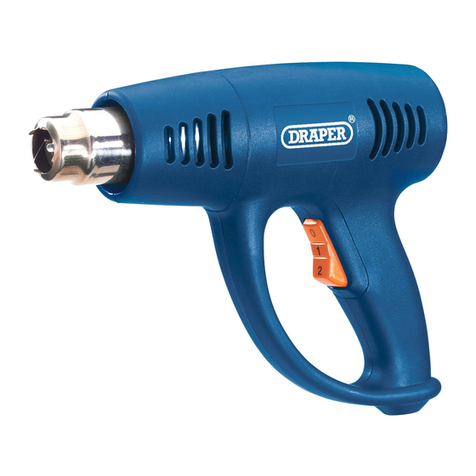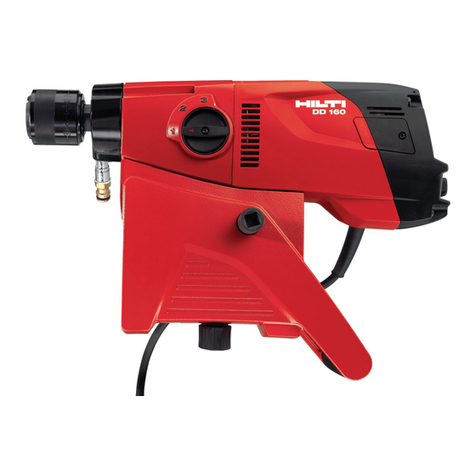
2
For your safety and the safety of others, read and understand the
safety recommendations and operating instructions before operat-
ing a nutrunner.
Always wear protective equipment:
For additional information on eye protection and face protection,
refer to Federal OSHA Regulations, 29 Code of Federal Regula-
tions, Section 1910.133., Eye and Face Protection, and American
NationalStandardsInstitute,ANSIZ87.1,OccupationalandEduca-
tional Eye and Face Protection. Z87.1 is available from the Ameri-
can National Standards Institute, Inc., 11 West 42nd Street, New
York, NY 10036.
Hearing protection is recommended in high noise areas 85 dBA or
greater. The operation of other tools and equipment in the area,
reflective surfaces, process noises and resonant structures can
substantially contribute to, and increase the noise level in the area.
Excessiveairpressure90PSIGorwornmotorcomponentscanalso
increase sound level emitted by tool. For additional information on
hearing protection, refer to Federal Regulations, Section 1910.95,
Occupational Noise Exposure, and American National Standards
Institute, ANSI S12.6, Hearing Protectors.
Cleco nutrunners are designed to operate on 90 psig (6.2 bar)
maximum air pressure. If the tool is properly sized and applied,
higher air pressure is unnecessary. Excessive air pressure in-
creases the loads and stresses on the tool parts, sockets, and
fasteners and may result in breakage. Installation of a filter-regula-
tor-lubricator in the air supply line ahead of the tool is recom-
mended.
Before the tool is connected to the air supply, check the throttle for
proper operation (i.e., throttle moves freely and returns to closed
position). Clear the air hose of accumulated dust and moisture. Be
careful not to endanger adjacent personnel. Before removing a tool
from service or changing sockets, make sure the air line is shut off
and drained of air. This will prevent the tool from operating if the
throttle is accidently engaged.
Itis essentialfor safeoperation thatany operatorof anutrunner use
good balance, sure footing, and proper posture in anticipation of a
torque reaction. Insure that the operator's hand will not be wedged
or pinched between the work and the tool when operating.
Reaction bar nutrunners are equipped with a torque reaction bar.
These bars can be braced against the work or other suitable points
toabsorband relievethe operator ofthe torquereactiontransmitted
Safety Recommendations
WARNING!
Impact resistant eye protection
must be worn while operating
or working near this tool.
CAUTION!
Personal hearing protection is
recommended when operating
or working near this tool.
by the tool. Tool balance arms are also available to absorb the
torque reaction of the tool while balancing the weight of the tool for
improved ergonomic applications.
If the tool is to be reversed, locate torque reaction bar in a position
that will resist torque reaction and prevent entrapment. See Direc-
tions on next page.
Tools with clutches can stall rather than shut-off if adjusted over
maximum power output of tool, or if there is a drop in air pressure.
Reactionbarmustbeproperlypositionedtoresisttorque.Operator
must release throttle to stop tool if this occurs. Do not use without
properly positioned reaction bar.
Reversible tools can have torque reactions in either direction. The
reaction bar must be properly positioned to resist the torque
reaction.
Someindividualsmay besusceptible todisordersof thehands and
armswhen performing tasksconsisting ofhighly repetitive motions
and/or exposure to extended vibration. Cumulative trauma disor-
derssuchascarpaltunnelsyndromeandtendonitismaybecaused
or aggravated by repetitious, forceful exertions of the hands and
arms. Vibration may contribute to a condition called Raynaud's
Syndrome. These disorders develop gradually over periods of
weeks, months, and years. It is presently unknown to what extent
exposure to vibrations or repetitive motions may contribute to the
disorders. Hereditary factors, vasculatory or circulatory problems,
exposure to cold and dampness, diet, smoking and work practices
are thought to contribute to the conditions.
Any tool operator should be aware of the following warning signs
and symptoms so that a problem can be addressed before it
becomes a debilitating injury. Any user suffering prolonged symp-
toms of tingling, numbness, blanching of fingers, clumsiness or
weakened grip, nocturnal pain in the hand, or any other disorder of
the shoulders, arms, wrists, or fingers is advised to consult a
physician. If it is determined that the symptoms are job related or
aggravatedbymovementsandposturesdictatedbythejobdesign,
itmaybenecessaryfortheemployertotakestepstopreventfurther
occurrences. These steps might include, but are not limited to,
repositioning the workpiece or redesigning the workstation, reas-
signing workers to other jobs, rotating jobs, changing work pace,
and/or changing the type of tool used so as to minimize stress on
theoperator. Sometasks mayrequire morethan onetype oftool to
obtain the optimum operator/tool/task relationship.
CAUTION
!
Repetitive work motions and/or vibration
may cause injury to hands and arms.
Use minimum hand grip force consistent
with proper control and safe operation.
Keep body and hands warm and dry.
Avoid anything that inhibits blood circulation.
Avoid continuous vibration exposure.
Keep wrists straight.
WARNING
!
Avoid repeated bending of wrists and hands.










